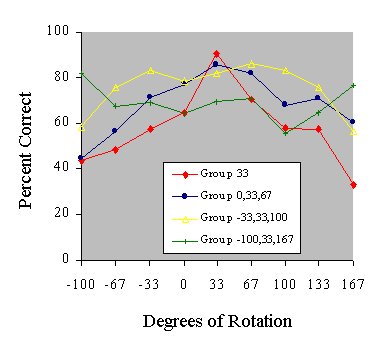|
Group 33 produced a generalization gradient that was similar in shape
to the gradients obtained in the first experiment. Discrimination performance
was maximal at the training orientation of 33° and then fell off
on either side as the objects were rotated farther from the original viewpoint.
All of the orientations were recognized above the chance level of 25%.
The other three groups of birds demonstrated a much flatter generalization
gradient than group 33. The degree to which the gradient was broadened
was related to the spacing of the training orientations, with the most
widely spaced training orientations (group -100,33,167) resulting in the
flattest generalization gradient.
|
![]()
